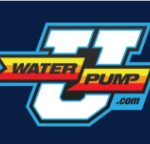The fuel supply system of an automobile is an important part of your car. It ensures optimal supply of fuel to the engine so that your vehicle could run efficiently. It comprises certain components, namely, the fuel tank, fuel lines, fuel pump, injectors, pulsation damper, fuel filters, fuel level gauges and the air filters. We are going to discuss each of them briefly in this article.
Fuel Tank
The fuel tank is located at any point depending upon the availability of space. Baffles are located inside the fuel tank to prevent splashing of fuel.
The fuel tubes are arranged to take fuel from the tank. A mesh like part called the sock is attached to the fuel taking tubes to remove dirt and debris. Fuel tanks are equipped with advanced control system to prevent fuel vapors being discharged into the atmosphere.
Modern cars are fitted with remote opening of the fuel tank, the filler flap using an electric motor.
 Fuel liners
Fuel liners
A fuel liner is a hose used to bring fuel from fuel tank to fuel injection system. It is commonly made of reinforced rubber to prevent bending or twisting. They could also be of nylon, reinforced rubber and steel.
Fuel pump
The fuel pump pumps the fuel from the fuel tank to the injector. from pump flows in a fuel rail loop between engine and fuel tank. A pressure regulator controls the pressure of the fuel before it enters the injector. Mechanical fuel pumps were in automobiles in the past. Modern vehicles are equipped with electric fuel pumps for more accuracy. An electric fuel pump has a one-way check valve that maintains pressure when the engine is off, and maintains the movement of fuel on either direction.
Injectors
An injector is an electrically controlled valve that converts the pressure energy of fuel to velocity energy. The nozzle present in the injector is responsible for the formation of fine mist of fuel that burns during the power stroke of engine. The main parts of injectors are nozzle body and needle valve. The needle valve is pressed against the nozzle body by a spring. You can adjust the injection pressure by adjusting a screw which is present on the injector.
In operation, the fuel in fuel pump enters the nozzle body at a high pressure pipe up to the level of injector. When the fuel pressure becomes high and exceeds the spring pressure attached to the nozzle body, the needle valve lifts off its position. The fuel is forced out of the nozzle and gets sprayed into the combustion chamber causing power stroke.
Fuel Filters
The fuel filters remove dirt and debris materials before entering into the fuel pump/carburetor. There are two stages of fuel filtering by the primary filter and the secondary filter.
The primary filter removes large particles. The secondary filter removes even fine dust particles. The filter in the fuel line and removes dirt and rust particles from the fuel.
The fuel filters serve a vital role in engine fuel systems. Unfiltered fuel may contain several kinds of contamination which results in the less performance of the vehicle.
Pulsation damper
Pulsation dampers reduce vibrations and absorb the impact load in the vehicles. Pulsation dampers are used improve the pumping system. Pulsation dampers reduce the load produced on the pumps up to 95%. The pulsation dampers are made of aluminum and stainless steel.
Air filters
Removes the dust and dirt from air before entering the engine. They improve the performance of engine by regularly changing or replacing them. Air filters could be filter paper, oil bath, oil form and cotton filters.
Fuel level gauges
Fuel level gauge indicates the level of fuel in the tank. It consists of two parts, namely, the sensing unit and the indicator.
The sensing unit usually uses a float connected to a potentiometer. If the tank empties, the float drops and slides a moving contact along the resistor, this increasing resistance. If the resistance is at a certain point, it will also turn “on” a “low fuel” light in vehicles.
Having a brief amount of knowledge of the fuel supply system of your car important as it may help you take care of it better.
